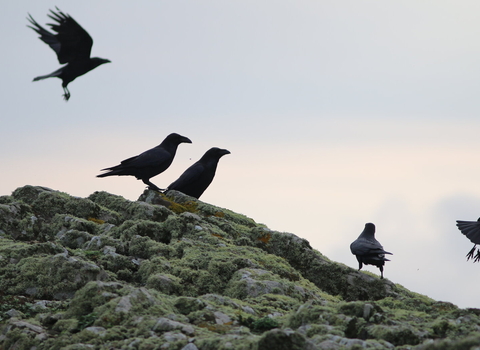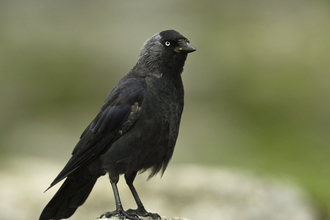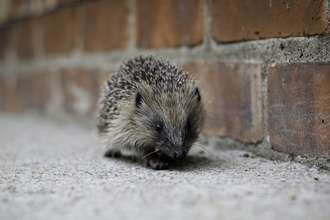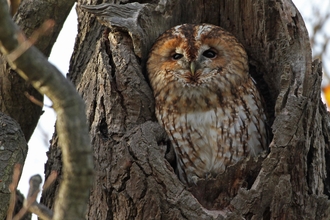The story of the crow and the pitcher
A thirsty crow found a pitcher (a jug) with a little water in it. But it couldn’t reach the water because the pitcher was too tall and the bird’s beak was too short. After thinking for a while, the crow had an idea. It collected pebbles and dropped them into the pitcher. With each pebble, the level of the water rose slightly. Eventually, the crow was able to reach the water and enjoy a well-earned drink!
The lesson of the story is: clever thinking can solve a tricky problem!
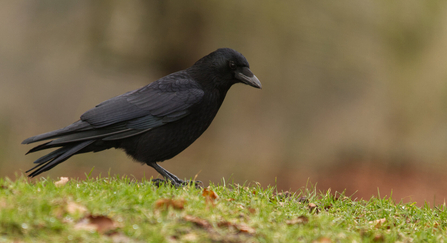
Tom Hibbert
Have you heard of Aesop’s Fables? These tall tales were written over 2000 years ago in Ancient Greece to teach people lessons about life. But, unlike lots of the stories, The Crow and the Pitcher could have happened for real! Corvids* can find answers to perplexing puzzles, use tools and show other signs of being super-clever!
*Corvids are birds in the corvidae (or crow) family. There are 8 species in the UK – carrion crow, hooded crow, raven, rook, chough, jackdaw, jay and magpie
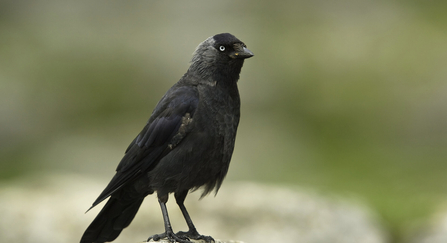
Neil Aldridge
Problem solved
In special tests in captivity, rooks, jays and some species of crow have all been able to work out the ‘pitcher puzzle’. Scientists reckon this requires the same brain-power as a 7-year old human child!
Clever corvids can solve problems in the wild too – like how to open food with a tough shell. Hooded crows drop shellfish on to hard rocks to break them apart. Carrion crows in Japan put hard-to-crack walnuts on the road and pick up the pieces after they’ve been run over by cars. They even place the nuts on pedestrian crossings so they can collect them safely when the lights turn red!
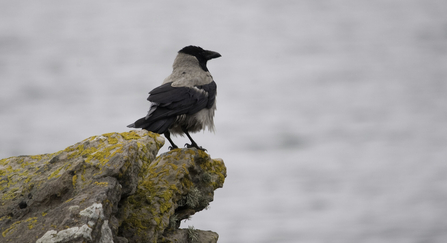
Amy Lewis
Tool time
Several animals use tools in the wild – including apes, dolphins, sea otters and even octopuses – but corvids are the only ones (apart from primates) to make tools. New Caledonian crows (which live on islands in the Pacific Ocean) poke twigs into tree holes to get at hard-to-reach insects. But they’ll also bend and carve specially-selected sticks into hooks to make their tools even better!
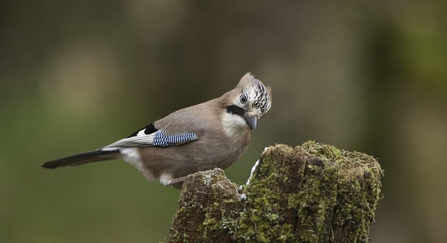
Mark Hamblin/2020VISION
Mega memory
Many corvids have amazing memories. In autumn, the UK’s population of jays are busy storing food away for the winter. Over the season, a single jay might bury more than 3000 acorns in the ground! When food becomes scarce in the colder months, the jay remembers where it buried its stash of snacks and digs them all up (well, almost all of them – the jays do forget a few acorns which then grow into oak trees!).
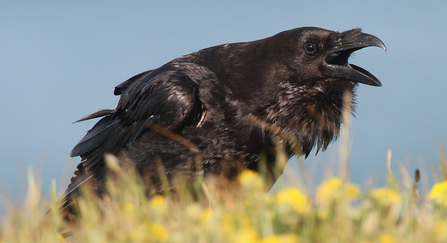
Andy Karran
Clever play
Some scientists say that another sign of intelligence in animals is playing. Ravens – the biggest corvids of all – sometimes break twigs off trees to play with. They’ve even been seen sliding down the snow-covered slopes of mountains on their backs! Caww… what fun!

